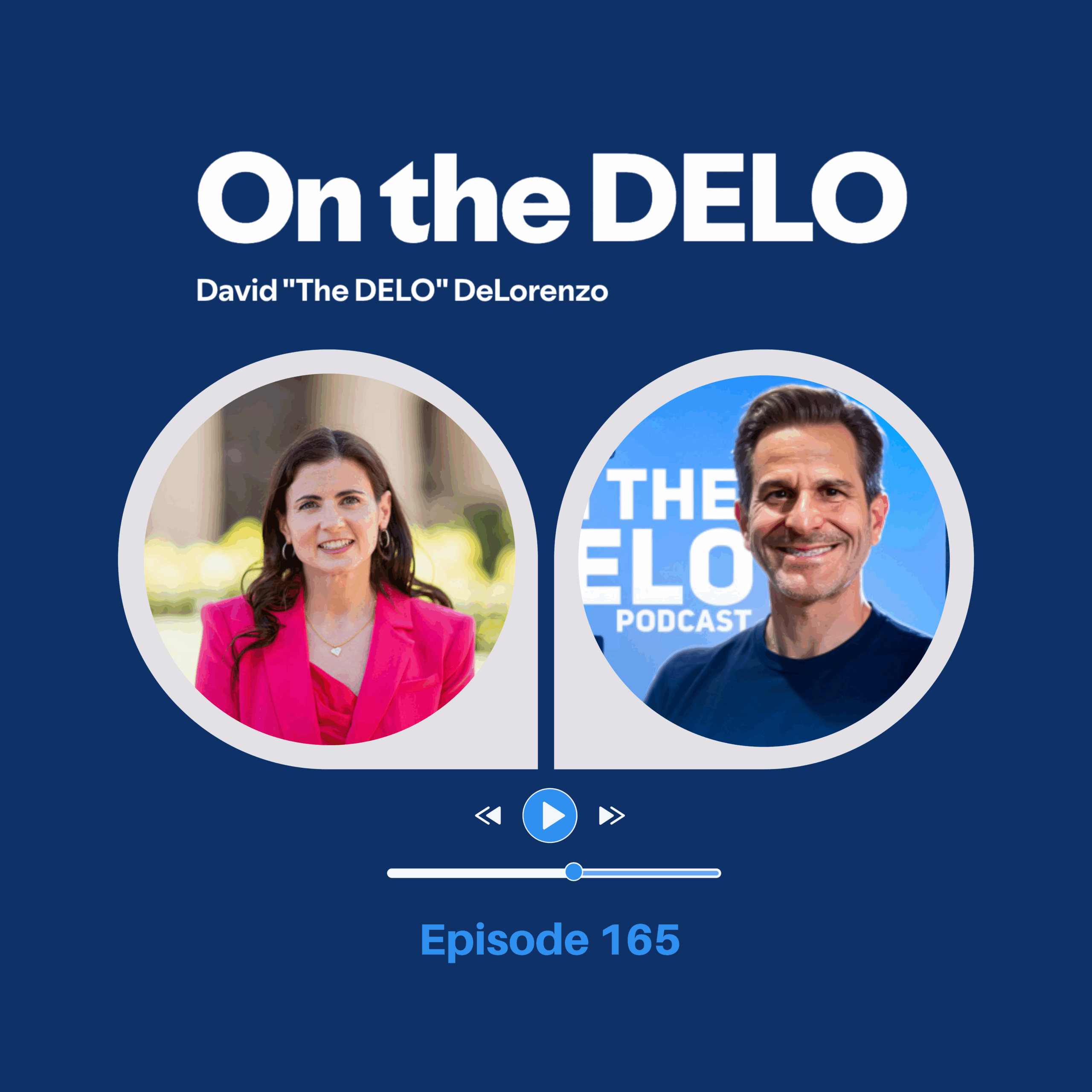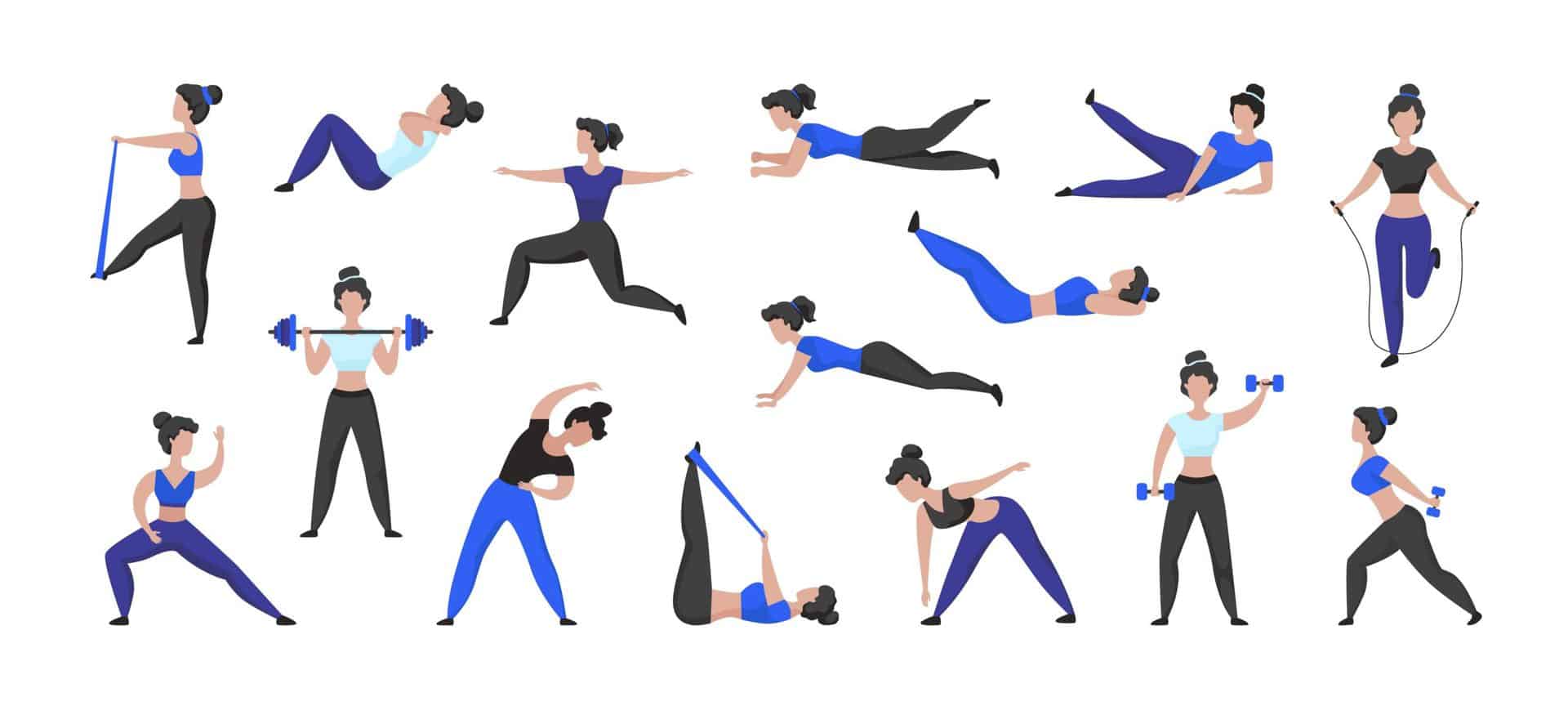

There’s one thing that functional medicine doctors will always recommend you do. Brace yourself, because you might dread hearing the word…
Exercise.
Did you cringe?
Don’t worry – you’re not alone. About 75% of adults in the United States aren’t getting the weekly amount of recommended exercise. What’s the recommended amount?
According to health.gov, adults should do at least:
- 2.5 hours to 5 hours of moderate-intensity exercise per week
OR
- 1.25 hours to 2.5 hours of vigorous-intensity exercise per week
Note: There are other specific guidelines for children, older adults, pregnant women, and adults with disabilities and chronic health conditions. Visit health.gov to learn more, or consult your doctor to create an individualized health goal.
I recommend that my patients get at least 2.5 hours of moderate-intensity exercise per week to support their cardio-metabolic health. Moderate intensity means you’re sweating, your heart rate’s elevated, and it’s hard to breathe but you can say a few words in a row without having to stop. This may not sound enticing, but exercise has impressive benefits for both your physical and mental health.
A lot of people know the recommendations and benefits of exercise and still do not exercise.
Maybe it’s because you’re busy or too tired…
…You’re struggling with pain from arthritis or a prior injury.
…You’re intimidated by people at the gym.
…You don’t know where to start.
…You haven’t found an exercise routine you enjoy.
I’m here to motivate you because I want you to partake in the same joy and benefits that I receive from exercise. I want to take the “cringe” out of exercise and help you embrace the best exercise routine for you. There’s no right or wrong form of exercise, the key is finding what works for you. I always tell my patients that the best exercise to start with is the one that you will do!
So, today I’m sharing five of my favorite types of exercise and the benefits they bring. I’ll then describe my top tips on how to make exercise a routine. Hopefully, this post will give you ideas of types of exercises you can try and how to implement them in your daily life.
- Cardio Exercise
All exercise can raise your heart rate, make you run out of breath, and make you sweat, depending on how hard you are working at it. This is because when you’re exercising, your heart and blood vessels are working really hard to deliver blood and oxygen to all parts of your body.
When it comes to exercise endurance and capacity, cardio will definitely help you out. Have you ever noticed that the first time you’ve tried running for one minute straight it’s difficult, but after a few weeks of practice you’re able to run a mile straight? That’s you building your exercise endurance! Cardio is fantastic for that.
Some examples of cardio exercise include:
- Swimming
- Biking
- Rowing
- Running
- Climbing
- Brisk walking (and/or walking up hills)
- Cross-country skiing
- Ice skating
Some additional benefits of cardio are that it boosts your brain functions, improves your mental health, reduces blood pressure at rest, and makes you disciplined. You’ll also reduce your risk for chronic diseases like obesity. This is important because obesity can lead to diabetes, high blood pressure, and heart disease.
Exercise causes your body to produce brain-derived neurotrophic factor (BDNF). BDNF is like Miracle-Gro® for your brain. Just like Miracle-Gro® is a fertilizer for plants, BDNF nourishes your brain cells. Your brain cells need nourishment to prevent learning and memory problems. For example, patients with Alzheimer’s disease and Parkinson’s disease were found to have low levels of BDNF. We want to prevent this from occurring and ensure our brain is nourished by BDNF by doing cardio exercises.
Now cardio sounds a little more worth it, don’t you think?
- Weight Lifting
Cardio is great, but it’s also crucial to incorporate weight lifting into your exercise routine. Some runners who get runner’s high and are addicted to exercise can actually injure themselves if they don’t incorporate weight lifting. (Weight lifting is also known as strength training or resistance training.)
Why is that?
Well, running causes you to input a large amount of force on your joints – specifically on your hips, knees, and ankles. Also, running requires you to use your muscles. We can strengthen our muscles around the joints through weight lifting. If you don’t strengthen your muscles and joints, then you’re more likely to get injured.
Don’t worry – weight lifting isn’t about only muscle mass. Everyone can benefit from weight lifting. Some benefits include:
- Better posture
- Weight loss
- Better sleep quality
- Better balance/less fall risk
- Increased bone density to prevent osteoporosis
- Support to your hormones
- Improved brain health
- Increased longevity
There are many pieces of equipment you can use for weight training, including free weights like dumbbells, barbells, resistance bands, exercise machines, or medicine balls. You can also practice resistance training through bodyweight exercises like pushups, pull-ups, squats and lunges for example.
This can be a bit of an intimidating process, so give yourself permission to start off slow and work your way up. I highly recommend finding yourself a high quality personal trainer if you are just getting started. They will help you learn proper form and lessen the chances of injury. Remember, Rome wasn’t built in a day and every bit counts.
- High-Intensity Interval Training (HIIT)
Want a combination of cardio exercise with weight training (aka resistance training)? Enter HIIT workouts.
If you’re not a fan of long stretches at the gym but still want to get in a solid workout for the day, HIIT may be the best fit for you. A lot of fitness gurus and gyms like Orange Theory and CrossFit have incorporated HIIT workouts.
So what is it?
HIIT workouts require you to do short bursts of intense exercise (1-5 minutes) with a mix of resistance training. Your heart will probably feel like it’s beating out of your chest, like when you’re doing cardio. You’ll most likely reach at least 80% of your heart rate’s maximum capacity for that short 1-5 minutes.
HIIT workouts can build your endurance just like cardio exercise. It’s also a great option for weight loss and overall heart and brain health.
- Yoga
Yoga originated in India but has become popular in the Western world thanks to its many health benefits. If you’re looking to increase your flexibility but you also want a challenge that will make you sweat – then it may be time to unleash your inner yogi!
Yoga can help immensely with stress relief. Yoga can also help relieve back, neck, and shoulder pains that may come from poor posture or chronic pain. You can also experience improved sleep and improved mental health.
There are many different types of yoga to choose from. Yin or restorative yoga is more about breathing and stretching and holding poses for longer periods of time. Flow yoga is about moving through a series of poses that incorporate stretching and strength both. And there are even yoga classes that add in some light weights as well. Some yoga studios will also heat up their classrooms to make it a more challenging workout.
While you can take a yoga class at a studio, there are also more affordable yoga classes online and on YouTube.
- Pilates
If you’re looking to improve your flexibility and gain a little bit of strength, Pilates would be a great workout to incorporate.
Pilates incorporates dynamic flexibility exercises where you move your body while slowly increasing the speed of your movement. Pilates also incorporates static flexibility movements where you do small movements at a certain position.
In addition to flexibility, Pilates can also improve your balance and core strength since you’ll need to balance your body while doing specific movements. Lastly, Pilates can improve your range of motion, proprioception (perception of the position of your body), and overall strength.
Where can you take a Pilates class?
In addition to in-studio classes, you can also join pilates classes through YouTube videos and online classes.
No matter which form of exercise you choose, I highly recommend that you move your body several times per week. You’ll experience physical benefits but also mental and emotional benefits through exercise. And we could all use an extra boost during times like these.
How to Create an Exercise Routine
You’ve learned different forms of exercise and the benefits that they bring. But how do you actually implement exercise into your everyday life? How can we turn exercise from an obligation that you’re dreading into a habit you look forward to daily?
First, know and believe that it’s completely possible. Your thoughts can turn into actions leading to results. As I mentioned in a previous blog post, habits don’t stick because of a thought process or feeling you’re having. You may be thinking/feeling:
- “I’m not seeing physical results fast enough from exercising.”
- “I have to find the perfect workout.”
- Anxious, stressed, or depressed
These thoughts may lead to negative emotions and as a result little to no action. Instead, reframe your thoughts to believe that you’re capable of forming an exercise routine and enjoying it.
Other tips come from James Clear, the author of “Atomic Habits.” Clear encourages his readers to start with a very small habit. You don’t want to overwhelm yourself at the beginning. Then, you can increase your habit in a small way every day. For example, if you haven’t implemented an exercise routine in a while, it might be overwhelming to you and your body to run a 5K and then lift weights at the gym.
Instead, start with something small like a walk to start (or end) your day. You can increase the length of time and distance you walk or increase your endurance by running. Each day, you can make your workout a little bit harder.
There may be days that you miss exercise, but this doesn’t mean you need to give up. Clear says, “When you slip, get back on track quickly.” He recommends never missing a habit twice to keep you on track.
How long does it take to form a new exercise habit? This may vary for each individual, but a study performed on new gym members found that exercising four times per week for six weeks was the minimum requirement that they needed to form an exercise habit.
When it comes to forming an exercise routine, consistency and positive thoughts can form a strong foundation. If you’d like more guidance, keep reading to learn about a special resource I created for you.
Are You Ready to Embrace the Benefits of Exercise for Your Health?
I hope you are! I’m cheering you on as you go from seeing exercise as a “have-to obligation” to a “get-to habit.”
And the best part? You’ll experience the overall physical, mental, and emotional benefits of exercise that will change your life for the better.
Now while exercise is a critical, lifestyle habit we can implement, it’s not the only lifestyle habit that can impact our health. At my practice, besides exercise and movement, we also look at improving other important lifestyle factors like:
- Nutrition
- Sleep
- Stress management
- Toxin reduction
These lifestyle habits form the foundations of your health. While this may not be new to you, you might not have tangible tips to make positive changes in each of these areas. Or maybe you want to improve your health through a functional medicine approach even though you’re not seeing a Functional Medicine practitioner.
This is why I created a special Functional Medicine resource for you.
If you want to:
- Improve your energy through exercise, sleep, and stress management
- Reduce inflammation through toxin reduction
- Identify food sensitivities through Functional Medicine and a paleo approach
Click here to check out my master class, “7 Weeks to Your Healthiest Self.”
The Master Class comes with 5 educational and instructional videos and also resources including:
- “7 Weeks to Your Healthiest Self” E-book
- 10 delicious recipes I created and continue to make in my kitchen
- A resource guide that will ensure your success
- A food reintroduction tracker to ensure you’re reintroducing foods the optimal way after a 30-day reset
Not sure if this program would be a great fit for you? Fill out this form to ask us your questions, and we’ll get back to you as soon as we can.
Here’s to your overall health including exercise! We hope you’ll experience all the health benefits exercise and the pillars of Functional Medicine bring.
P.S. What’s your favorite form of exercise? Share with me below. Mine are currently walking, CrossFit, Rock Climbing, and Weight Lifting 🙂
Share:
Dr. Emily Parke
Social Media
Most Popular Posts
Subscribe To Our Newsletter
Related Posts

New Podcast Episode: My journey into functional medicine + what I’ve learned
I’m excited to share that I recently joined DeLo for Episode 165 of the On the DeLo podcast! In this conversation, we explored my journey

Understanding the Essential Labs for Women on Hormone Replacement Therapy (HRT)
So what are the minimum labs we’re looking at when we do hormone replacement therapy? We obviously want to look at an estrogen level, so

How to figure out the right amount of HRT in women
What about checking lab values when you’re on hormone replacement therapy? I do find it to be helpful, but we also want to consider symptoms.

Did you know there’s a difference between food allergies, sensitivities, and intolerances?
Did you know that there’s a difference between food allergies, food sensitivities and food intolerances? Food allergies, the reactions tend to happen pretty immediately and
